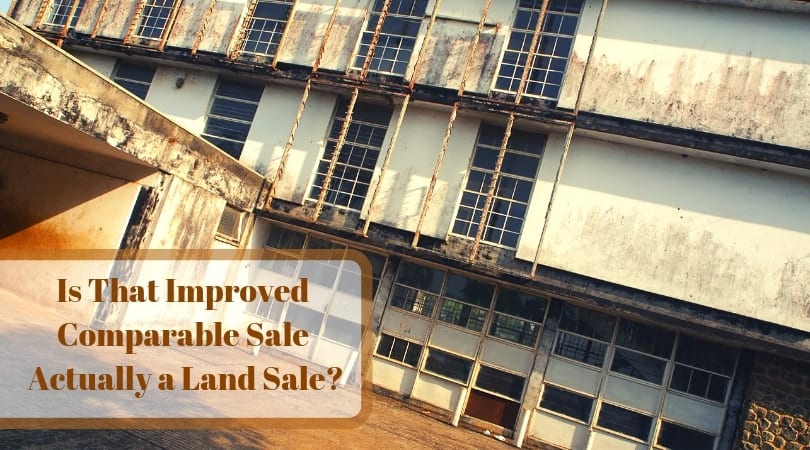Is That Improved Comparable Sale Actually a Land Sale?
Categories: Commercial Appraisals, Development, Real Estate Appraisal
Many residential appraisals don’t require the application of the cost approach, but there are situations where separate value opinions for land and improvements are necessary. In certain circumstances, the sales comparison approach is hampered by a shortage of sale properties that are truly comparable to the subject. Experienced appraisers recognize that a peculiar improved property sale may wholly reflect land value. They also know how to analyze outlier sales to support both vacant and improved property value opinions.
When Land Value Is Needed
An appraisal of a newly constructed property, or one where construction is proposed or in progress, usually includes a separate value for the land exclusively. Land value is also a necessary component of highest and best use analysis: when it appears that the subject property’s current use is not its highest and best use, the highest land value among possible uses can be used to determine the subject property’s highest and best use. Special-purpose properties (such as museums, schools, and libraries) rarely sell in an open market; their appraisal typically requires land value opinions.
An appraisal’s intended use may also be a separate land value estimate. When an appraiser is estimating just compensation for a partial taking, land value is a central component of the appraisal conclusion. Some intended users, including clients and regulatory agencies, mandate the use of a combination of the cost approach and land value opinion.
Clues to Identify a Land Sale
An experienced appraiser recognizes comparable sales that seem to be outside the normal range of unit prices. When an improved property’s price per square foot of building is oddly low, it is possible that the sale of that property is based primarily on land value with no (or negligible) contributory amount paid for improvements. If an improved sale property is surrounded by properties under different use, its sale price alone may be enough to indicate land value. Or if a neighborhood is likely to change significantly in the near future, improved property sales may anticipate the demolition of existing improvements and redevelopment.
Sometimes, an appraiser can expand a comparable sales search into a broader market area or past transactions. The presence of a new building indicates the underlying land was either vacant or redeveloped before new construction commenced. Research may reveal the purchase of that land or the improved property that preceded the new building.
Analysis to Derive Land Value
An extensive review of comparable sales can sometimes seem like ‘appraising the comparables.’ However, this kind of study is often the only way to derive the contribution of a land/building in a sale transaction or develop adjustment factors for paired sale analysis.
Appraisers use several methods to estimate the value that should be attributed to land in an improved sale. One of the simplest of these processes is allocation. The appraiser assumes land and building value ratios based on ratios applied by experienced developers or percentages derived by mass appraisals of similar properties. This method works satisfactorily when sufficient development data are available or when the local assessor uses well-supported assessment models.
Extraction—another of the appraising methods mentioned above—can also separate land and improvements value. In this approach, the appraiser estimates a sale property’s depreciated costs and deducts them from the total sale price. This practice is most effective when the improvements are easily quantifiable.
Two variations of the income approach may indicate land value. In residual land capitalization, the appraiser estimates a sale property’s net operating income and subtracts from that the income due that building. The remaining net income to land reveals land value through the application of a market-derived capitalization rate. Furthermore, Ground rent capitalization requires that the appraiser research both land rental costs for similar vacant tracts and the capitalization rates suggested by those tracts’ sale.
Matching Sales Analysis to the Circumstances
A land value opinion can be required in a variety of assignments. Vacant site sales are often scarce in fully developed neighborhoods or in locations where vacant land rarely changes hands. In such instances, sales of improved properties can be used as the sole indication of land value. Some improved sales may even grant little to no value to existing improvements. The experienced appraiser knows how to identify sales that primarily indicate land value and determine such sales comparability to the subject property. Appraisers’ skill and judgment are crucial when either the assignment requirements or available comparable sales data do not fall within the demands of a simple sales comparison approach.





Leave a Reply
Want to join the discussion?Feel free to contribute!